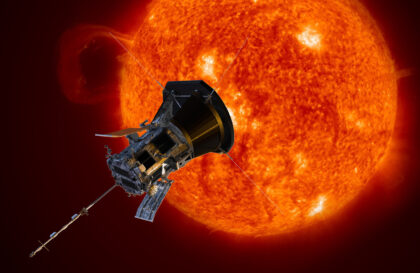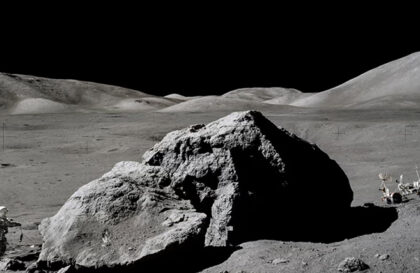The OSIRIS-REx mission will be the first for the United States to bring back asteroid samples to Earth. Before this, Japan had already carried out two similar missions. Hayabusa was a pioneer in this direction, bringing asteroid samples to Earth in 2010. Its successor, Hayabusa2, successfully returned samples from the asteroid Ryugu in 2020.
End of the OSIRIS-REx mission
NASA’s mission to return samples from an asteroid was planned second by second. The OSIRIS-REx mission, launched in 2016, spent four years traveling and exploring the asteroid Bennu. Sample collection took place in 2020, and now, three years later, the spacecraft is returning to Earth. The capsule is expected to land on September 24 at 14:55 GMT.
Credit: NASA
NASA and the OSIRIS-REx team precisely calculated the spacecraft’s route and landing time. On September 10, the ship adjusted its trajectory, aiming for an area in the Utah desert. After landing, the capsule will be transported to Houston for further analysis.
NASA will livestream the OSIRIS-REx landing on September 24 from 10 a.m. ET on Space.com. A broadcast in Spanish is also planned on the space agency’s social networks. A press conference will begin at 5:00 pm ET on NASA’s website after the capsule’s landing.
How will the landing take place?
Having received a command from Earth, OSIRIS-REx will release the container with samples of the asteroid at exactly 10:42 GMT. Without maneuver controls, the recovery capsule follows a ballistic trajectory to the Utah UTTR. All key moments, from re-entry to the deployment of brake and main parachutes, will be carefully monitored and calculated with a high degree of accuracy. More than 4 hours will pass from the moment the command is received until the capsule lands. The capsule will be tracked through the atmosphere and land with an accuracy of 9 meters in a given area, opening a parachute at an altitude of 1.6 km.
OSIRIS-REx will continue its mission, moving towards a new destination – the asteroid Apophis. The mission will be known as OSIRIS-APEX and will take six years, including 18 months in orbit around Apophis.
Backup plan in case of failure
The OSIRIS-REx mission operations teams have a backup plan in place if, for any reason, difficulties arise with the main landing procedure. This plan includes the option to delay the capsule’s landing by two years.
However, this solution is not ideal. In this scenario, the ship will approach the Sun closer than is desirable for the safety of asteroid samples. Prolonged and intense exposure to solar radiation can affect the condition of the collected sample, so the team would prefer to return it to Earth as soon as possible.
Why was the asteroid Bennu chosen for the mission?
Credits: NASA/Goddard/University of Arizona
After carefully analyzing many potential objects, asteroid 101955 Bennu was selected as the target for the OSIRIS-REx mission. Several factors determined this choice:
- Near-Earth asteroids such as Bennu have orbits close to Earth, making them accessible for research. Bennu is between 0.8 and 1.6 AU. from the Sun, meeting the mission requirements.
- One of the main criteria was the rotation speed of the asteroid. If the asteroid is spinning too quickly, it can hamper the sample collection process.
- Bennu has a diameter of more than 200 meters, the minimum size required to collect samples safely.
- Scientists were particularly interested in carbon-rich asteroids. Such asteroids are considered the most primordial and unchanged, preserving the chemical trace of the early stages of the Solar System.
Credit: thenationalnews
For all these parameters, Bennu turned out to be one of the most suitable candidates among all the near-Earth asteroids studied by that time.
Bennu was full of surprises
In September 2016, the OSIRIS-REx mission began its two-year journey to the asteroid Bennu and reached its orbit by December 2018.
A mass of gravel and dirt ejected from the surface of asteroid Bennu by the touchdown of NASA’s OSIRIS-REx probe. (Image credit: NASA’s Goddard Space Flight Center/CI Lab/Jonathan North)
Over the next two years, the device was engaged in a detailed study of the asteroid. However, an attempt to collect samples in October 2020 presented a real challenge: Bennu, composed of mud, rocks, and pebbles, held by weak gravity, appeared to be trying to “swallow” the ship like a swamp. This caused a huge amount of debris to be released into space, posing a severe threat to OSIRIS-REx.
In May 2021, OSIRIS-REx left the asteroid and began its return journey.
Banner image: NASA’s Scientific Visualization Studio
Image credit:
https://www.nasa.gov
https://ts2.space
https://www.nasa.gov
https://www.thenationalnews.com
https://solarsystem.nasa.gov






